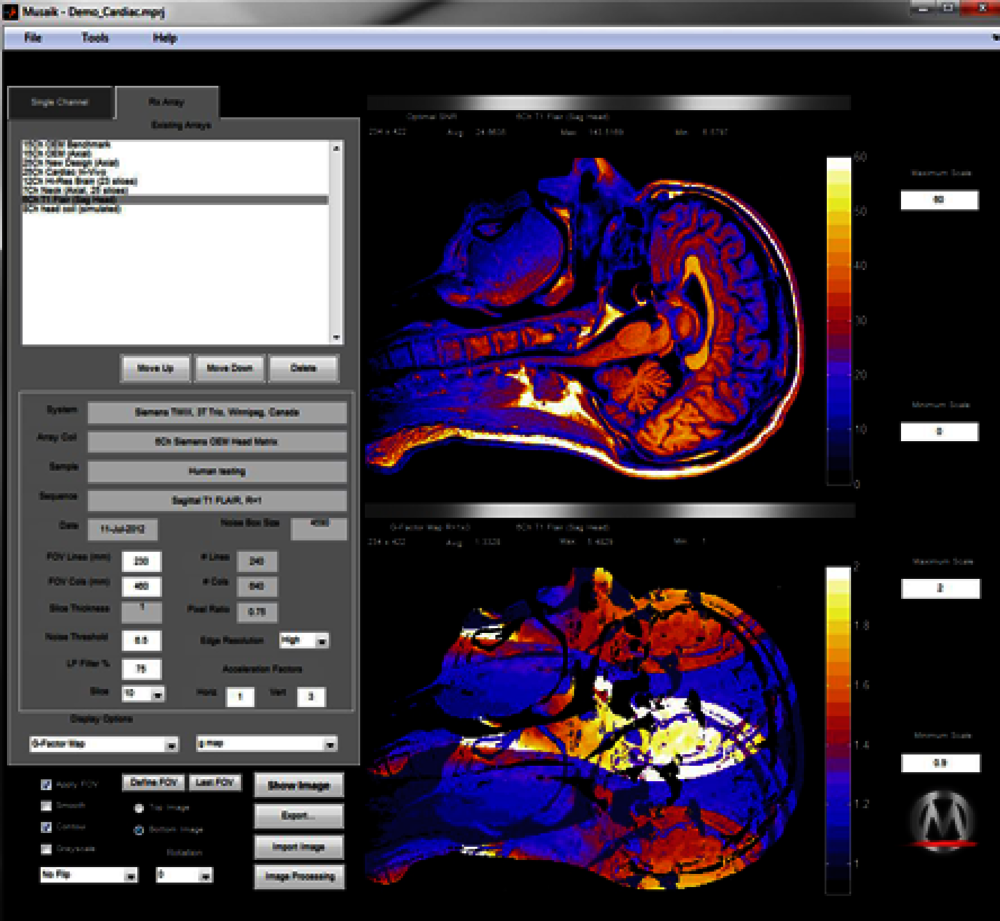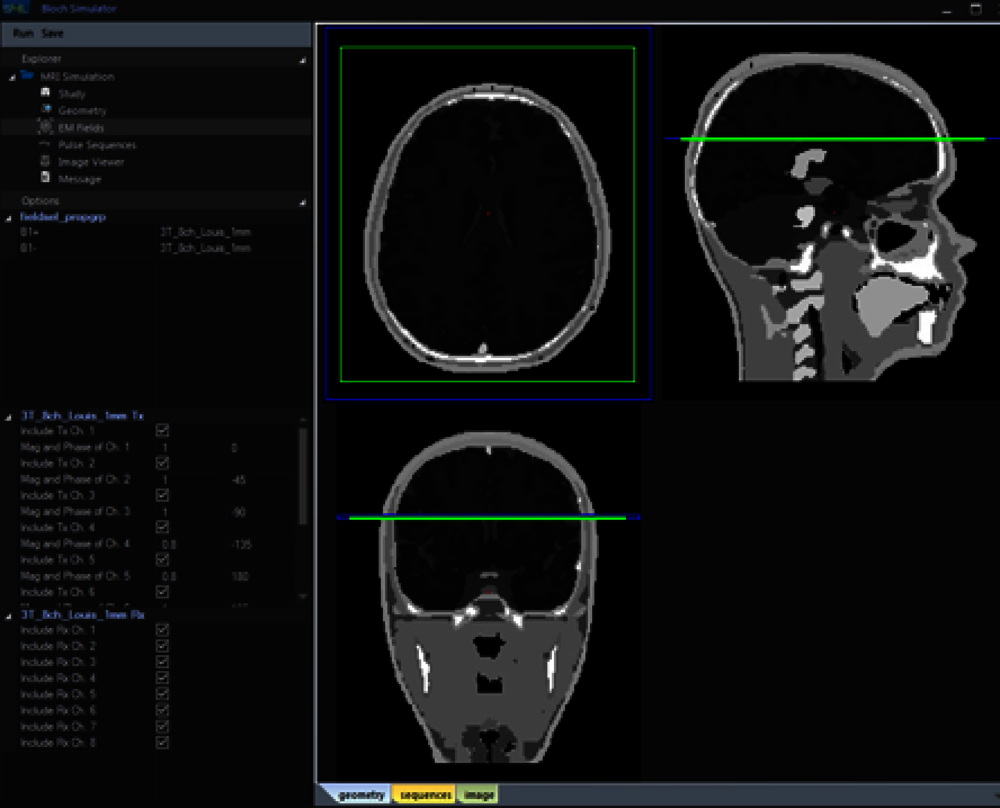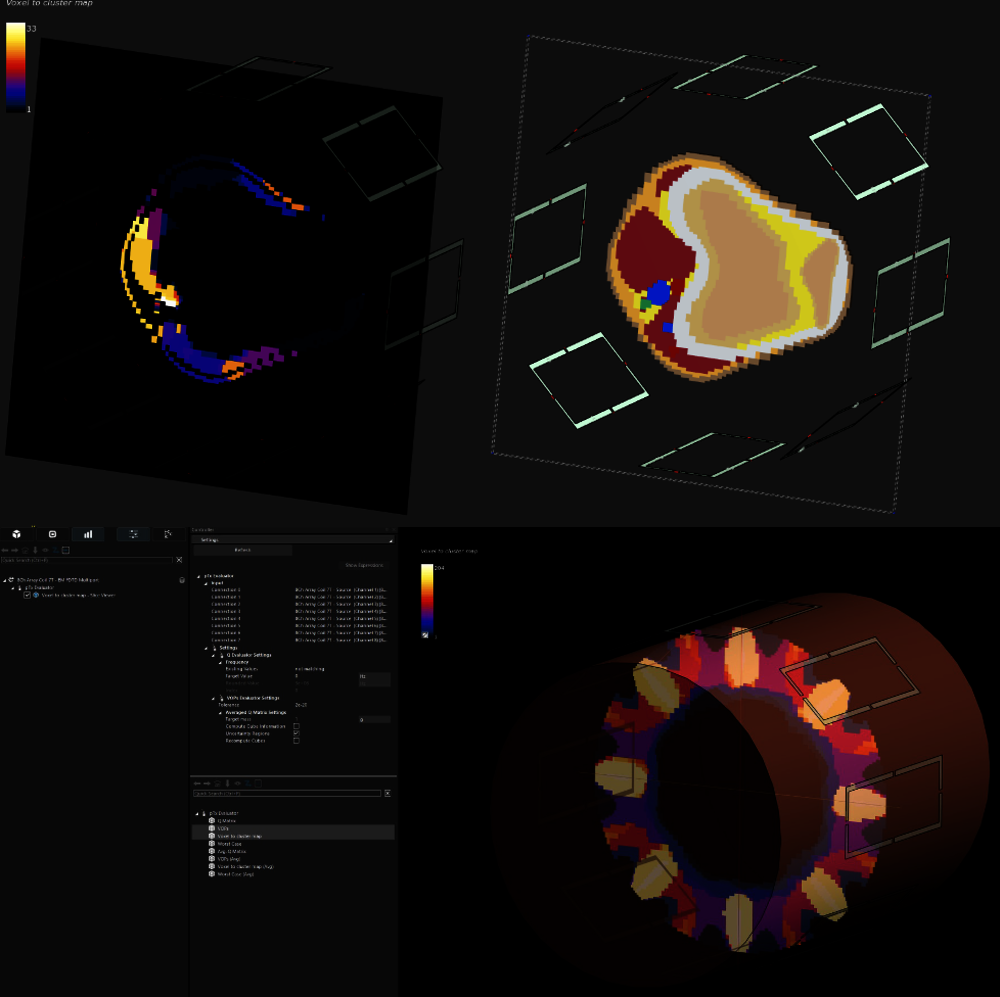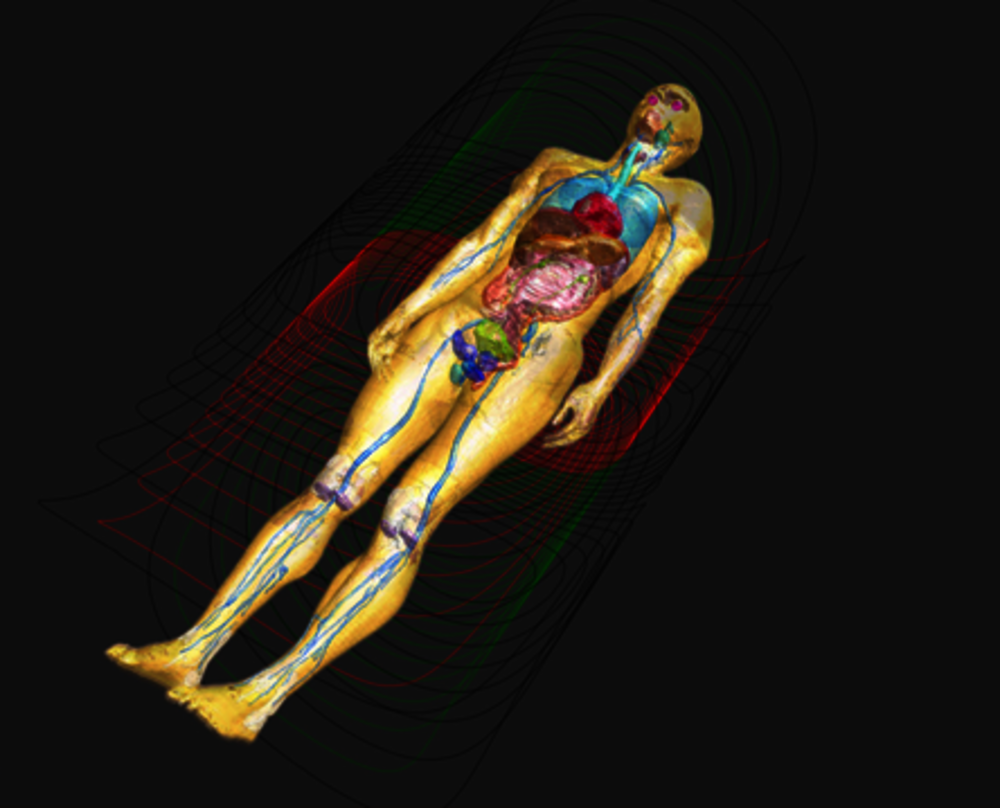Key Features
- 3-D analysis of array coil SNR and g-factor performance
- Complex noise correlation matrix calculation
- Explore channel compression by combining multiple array elements into a single channel
- Export complex composite datasets for dedicated postprocessing
- Analyze ratio images to assess regional SNR or g-factor gains
- Assess 3-D average or maximum SNR gain for localized ROI
- SNR/g-factor displays to help gauge image quality limitations
- Data converters for Bruker Biospin, GE Healthcare, Philips Healthcare, Siemens Healthcare and Toshiba Medical
Applications
- Troubleshoot defective Rx channels and coil isolation
- Troubleshoot simulation model accuracy or experimental outputs by comparing equivalent systems
- Compare different image reconstruction algorithms
- Verify performance of realized coil designs
- Study anatomy effects on g-factor




